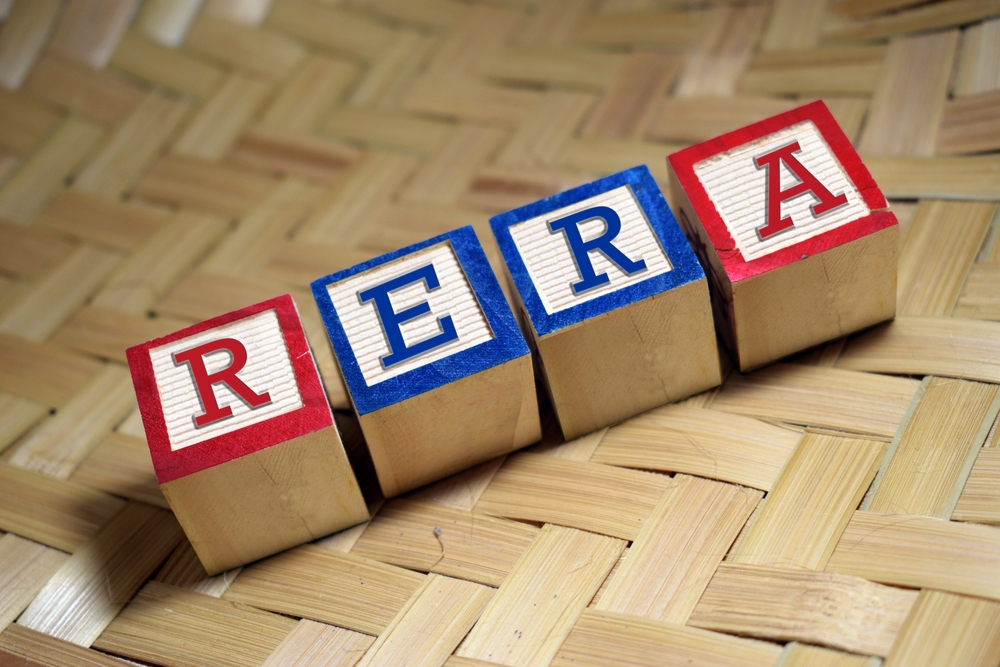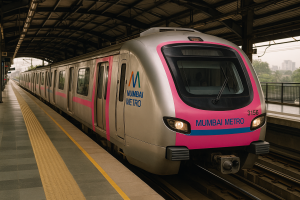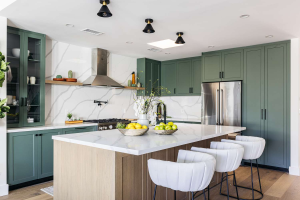Introduction
RERA Means Real Estate (Regulation and Development) Act, 2016, RERA Carpet area is an important consideration in the sale and purchase of any property. It provides prospective buyers with net usable floor space. Here’s everything you should know about the RERA Carpet area.
There is no single method for calculating the property’s area; rather, there are three. There are three types of areas: carpet (RERA carpet), built-up, and super built-up. Because of the various methods, developers and builders faced numerous fraud and cheating cases. The complaints were that homebuyers received less flat space than promised. To address this issue, the Real Estate (Regulation and Development) Act, 2016 (RERA) included a provision requiring builders to quote prices based on the RERA carpet area rather than the super built-up area. When you decide to buy a flat, there can be a lot of confusion about these terms,So, let’s look at what RERA carpet area means, how to calculate it, and what the difference is between super built-up area and built-up area.
What is RERA Carpet Area?
According to RERA (Real Estate Regulatory Authority), carpet area is an apartment’s net usable floor area+internal walls, excluding the size of external walls, service shafts, exclusive balcony or verandah area and exclusive open terrace. Here, exclusive means that the open terrace site is intended for the allottee’s exclusive use only. All developers and builders must sell properties based on the RERA carpet area rather than any other area type.
Homebuyers will receive a refund if there is a difference between the mentioned carpet area and the actual carpet area while the property is being developed. If there is a decrease, the builder will refund the excess amount+annual interest. Additionally, the amount must be refunded within 45 days. If the area increases, a homebuyer must pay the difference; however, RERA has set a maximum growth rate of 3%.
Impact of RERA Carpet Area
The implementation of RERA carpet areas has resulted in:
transparency in the real estate market
Trade and business practices are standardized.
It promotes trust and confidence.
It is necessary to mention RERA carpet area in brochures and marketing materials.
Sale price should be based on the RERA carpet area.
Any variation will result in an adjustment in consideration.
What is the Carpet Area?
In general, a carpet area refers to the space where a carpet can be laid. In technical terms, it is an apartment’s net usable area, excluding areas covered by external walls, areas under service shafts, exclusive balconies or verandahs, and exclusive open terraces.
Importance of RERA Carpet Area
The RERA Carpet area is very important in real estate transactions because it ensures that basic needs are met. Here’s why the RERA carpet area is important:
Transparency on the usable area
The RERA carpet area provides prospective homeowners with complete transparency into the enclosed space, which can be used for interior design or furnishings. To keep expectations realistic, RERA mandated that developers base pricing on the RERA Carpet area rather than the super built-up area.
Safeguarding the buyer’s interests
It is common for under-construction properties to undergo significant area changes after final construction is completed. To protect buyers, RERA regulates discrepancies between committed and final carpet area. In the event of a discrepancy, the builder must provide a proportional refund or adjustment of the price difference within 45 days of handing over possession.
What is the usable carpet area?
A usable area is the net area available to homebuyers or tenants, excluding all walls and ledge walls. This area includes balconies and utility areas. This is a critical area for property evaluation. Though the RERA carpet specifies the area agreed upon in the legal agreement with the developer, the usable area provides a comprehensive understanding of the carpet area available to the user.
What’s the difference between RERA Carpet and Carpet Area?
We now understand RERA carpet area definition and carpet area definition; the only distinction between the two is the thickness of internal walls. RERA Carpet Area includes the thickness of the internal walls. So, there is approximately a 5% difference between the two carpet areas. The RERA Carpet area is usually 5% larger than the carpet area. For example, if an apartment has 800 square feet of carpet, its RERA carpet area will be 840 square feet.
Difference between Saleable Area and RERA Carpet Area.
The carpet area with the loading factor is the sellable area. The loading occurs on the RERA carpet area. The developers use a saleable area to calculate the allotted total cost of a specific unit. To put it another way, the developer’s investment covers the entire project, which includes common areas, clubhouses, service, and other amenities. However, the developer only receives revenue for sold units. As a result, when someone sells a unit based on carpet area, the developer calculates the costs based on saleable area.
Let’s now understand the built-up and super-built-up areas.
Before RERA carpet, builders quoted prices based on built-up or super-built-up area, which increased the cost of an apartment. This resulted in fraud and cheating cases because homebuyers did not receive what they were promised. Built-up and super-built-up areas always exceed RERA carpet areas or even carpet areas.
Built-up area: The area of a building measured from its external perimeter wall surfaces. It includes both the carpet area and the wall thickness. It also includes other apartment features such as a dry balcony, terrace and flower beds.
The formula for calculating the built-up area:
Built-up area equals carpet area+wall area.
Super-built-up area: It is a saleable area on the premises. This area includes carpeting, terraces, walls, lifts, stairs, and balconies. In addition, some builders include a garden, pool, or clubhouse area. The loading factor for the carpet area is used to calculate the super built-up area.
According to RERA, a super built-up area includes carpet, built-up, and common areas such as stairs, lifts, and lobbies, etc.
Super built-up area is calculated using the following formula:
Super built-up area = built-up area+common areas.
What’s the main difference between Carpet Area, Built-Up Area, and Super Built-Up Area?
You now understand the definitions of carpet area, built-up area, and super built-up area. The primary distinction between them is the area they cover. The Carpet Area is the property’s actual unstable area, whereas the Built-Up Area includes the area covered by walls and other structures. The Super Built-Up Area includes both the Built-Up Area and the Common Areas. The super built-up area is always taken into account when calculating the property cost. Thus, understanding the differences between different area types is critical for calculating the actual property cost.
How Do I Calculate the RERA Carpet Area?
It is simple to calculate the RERA carpet area or RERA carpet area calculator because the carpet area is typically 70% of the built-up area. For example, if a property has a built area of 2000 square feet, its carpet area will be 1400 square feet.
Here are a few tips for calculating carpet area:
Seek assistance from a private technical assessor.
If you are applying for a home loan, have legal and technical assessors check the property for specifications.
Be cautious because a builder may quote a higher price based on the RERA carpet area; therefore, negotiate after comparing other property prices.
Steps on Measuring Carpet Area
First, measure the length and width of each room. You can use a laser measure to calculate the area.
Now multiply these measurements to determine the area of each room.
Measure the dimensions of your flat to determine the thickness of its internal walls.
Make a total footprint for all internal walls.
Calculate the total carpet area by adding the areas of all rooms and the footprints of all internal walls.
Keep in mind not to include balconies, exterior walls, or terraces.
Real estate developers use different terms.
The following are the terms used by real estate developers to define the area of a flat. However, it is important to note that the RERA carpet area only includes the kitchen, living room, bedroom, interior walls and bathroom. However, there are times when builders use different terms, which can lead to confusion among buyers.
Common areas are shared by all residents. Swimming pools, footpaths, lifts, gyms, and staircases are some examples. This is not part of the RERA carpeting area.
Exclusive verandah and balcony area: A permanent addition to a flat. Despite being attached to the flat, this area is not included in the RERA carpet area.
Exclusive open terrace area: This open terrace area is connected to the flat or apartment but is not part of the RERA carpet area.
Loading factor: The difference between the carpet and the densely packed area. Assume the loading factor is around 1:20, which indicates that the builder increased the carpet area by 20%.
Per square foot rate: Typically, developers quote a per square foot rate for residential projects based on the saleable area or super built-up area. However, the new regulation requires that quotes be given only to the carpet area. As a result, one should inquire with their developer about the carpet-to-super built-up area ratio. The higher the ratio, the more room inside the flat.
Per square foot rate: Typically, developers quote a per square foot rate for residential projects based on the saleable area or super built-up area. However, the new regulation requires that quotes be given only to the carpet area. As a result, one should inquire with their developer about the carpet-to-super built-up area ratio. The higher the ratio, the more room inside the flat.
How RERA is Helping Save Money?
The RERA’s goal is to increase transparency in the real estate sector and protect the interests of homebuyers. All projects are regulated by RERA, which means that a builder must quote money based on the RERA carpet area. The regulator helps people save money; here’s an example:
In May 2015, a builder quoted Rs 60,00,000 for a 3 BHK flat. The cost was calculated using the super built area of a flat, 1500 sq ft, at a rate of Rs 4000 per square foot.
The RERA guidelines must be followed, and prices are quoted based on the RERA carpet area. In this case, the RERA carpet area is 1200 square feet, which includes an area covered by external walls, areas under service shafts, an exclusive balcony or verandah area, and an entire open terrace space. Also consider the size of the inner partition of walls. According to the RERA carpet area, the price of the 3-BHK flat will be Rs 48,00,000, resulting in a loss of Rs 12 lakh because the price was quoted based on the super built area.
Also, there have been cases where a builder quotes a higher super built-up area that does not exist, forcing a person to pay additional property taxes for the rest of their lives. When purchasing a property, one must be vigilant to determine whether the area is adequately covered.
What to do in case of injustice.
If you have any complaints against a property builder or developer, please contact RERA. You must file a complaint against a promoter, developer, or builder on a state RERA website or submit an application at the RERA office. Once registered, the complaint will be resolved within 60 days.
Penalty imposed on developers or builders for providing false information
If a builder or developer provides incorrect information about the size of an apartment or the cost of a flat, they will be fined. According to Section 61 of the RERA Act 2016, if a developer provides incorrect information or otherwise violates the law, he will be fined 5% of the project’s estimated value.
What If You Do Not Purchase an RERA Registered Project?
If you do not buy a property that is not RERA registered, you may find yourself in trouble. If your builder goes bankrupt, he or she may refuse to give you any possessions. In addition, if the property is not RERA registered, the promoter will be unable to market it.
Latest Information: RERA Carpet Area
MahaRERA (Maharashtra RERA) has directed all promoters in the state to disclose all information about houses, plots, booked flats, and other constructions. All of this information should be presented in a standard format, including the total number of floors, shops, carpet area, sold/booked/unsold inventory, and registration information.
Conclusion: A homebuyer must understand the distinctions between the RERA carpet area, carpet area, built-up area, and super built area. When you understand the difference, you can negotiate more effectively and request the appropriate amount. Not only that, but it also helps save a significant amount of money. So, it’s always a good idea to do some research before purchasing a property.
















